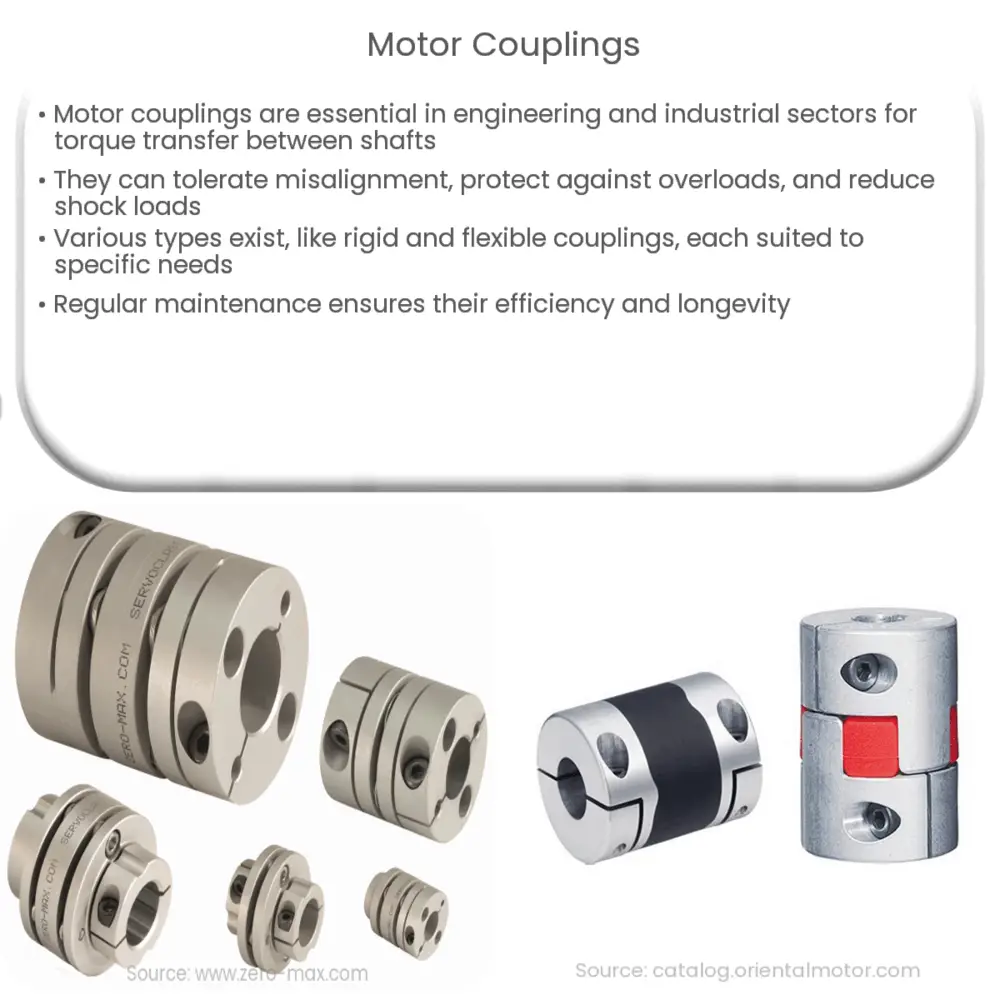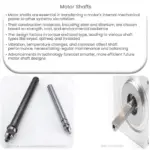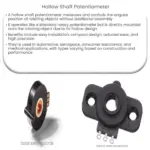Explore the role, types, and uses of motor couplings in various industries, along with their maintenance for optimal performance.

Introduction to Motor Couplings
Motor couplings are critical components in various engineering and industrial applications. They are designed to transfer torque from one shaft to another efficiently and effectively. This article offers an in-depth exploration of motor couplings, their types, and their importance in different applications.
Understanding the Role of Motor Couplings
Motor couplings are fundamentally mechanical devices used to connect two rotating shafts for the purpose of transmitting power. They offer a means of connecting driving components to the parts that they drive, facilitating the transfer of motion and force between them. While their primary function is to transmit torque and rotational motion, motor couplings also serve several other important functions.
- They accommodate misalignment: Shafts are rarely perfectly aligned. Motor couplings are designed to tolerate small amounts of misalignment without suffering significant wear or transmitting harmful stresses to the connected components.
- They provide protection against overloads: Some types of motor couplings can act as torque limiters, breaking or slipping when the torque exceeds a specified limit to prevent damage to expensive machinery.
- They reduce transmission of shock loads: Motor couplings can absorb transient peak loads, reducing shock to the connected machinery.
Types of Motor Couplings
There are various types of motor couplings, each with unique features and suited to specific applications. The most common types include:
- Rigid Couplings: Rigid couplings are simple and economical couplings that are used when the shafts are co-linear and do not require any misalignment. They are primarily used in applications where the alignment is not likely to change during operation.
- Flexible Couplings: Flexible couplings are more versatile and can accommodate some degree of misalignment between the shafts. There are several subtypes within this category, including jaw couplings, gear couplings, and elastomeric couplings.
It’s crucial to select the right type of motor coupling based on the specific requirements of the application, the degree of misalignment, the operating conditions, and other factors.
Motor Couplings in Various Industries
Motor couplings are used extensively across a wide range of industries due to their fundamental role in mechanical power transmission. From manufacturing equipment to HVAC systems, motor couplings are instrumental in maintaining operational efficiency and equipment longevity.
Motor Couplings in Specific Industries
Motor couplings are crucial in many industries, including but not limited to the following:
- Manufacturing: In manufacturing industries, motor couplings are used in a variety of machines, including conveyors, mixers, and milling machines. They are essential for transferring torque and maintaining the operational efficiency of these machines.
- Automotive: In the automotive industry, motor couplings are used in various systems, including power transmission and steering systems, to ensure smooth operation.
- Energy: Motor couplings play an essential role in the energy sector, particularly in wind turbines. They connect the turbine’s rotor to the generator, enabling efficient energy transfer.
Maintaining and Replacing Motor Couplings
Maintenance and timely replacement of motor couplings are crucial to prevent machine downtime and costly repairs. Various signs indicate a need for maintenance or replacement, including abnormal noise, excessive vibration, and reduced operational efficiency. Regular inspections and preventive maintenance can help identify these issues early and extend the life of the motor coupling.
Conclusion
In conclusion, motor couplings play a pivotal role in various applications across numerous industries. They not only transfer torque from one shaft to another but also accommodate misalignment, provide overload protection, and reduce transmission of shock loads. While there are different types of motor couplings, including rigid and flexible ones, the choice depends on the specific requirements of the application and operational conditions. Regular maintenance and timely replacement of motor couplings are crucial to ensure optimal performance and longevity of machinery. As advancements in technology continue, we can expect to see even more innovative and efficient motor couplings in the future.




